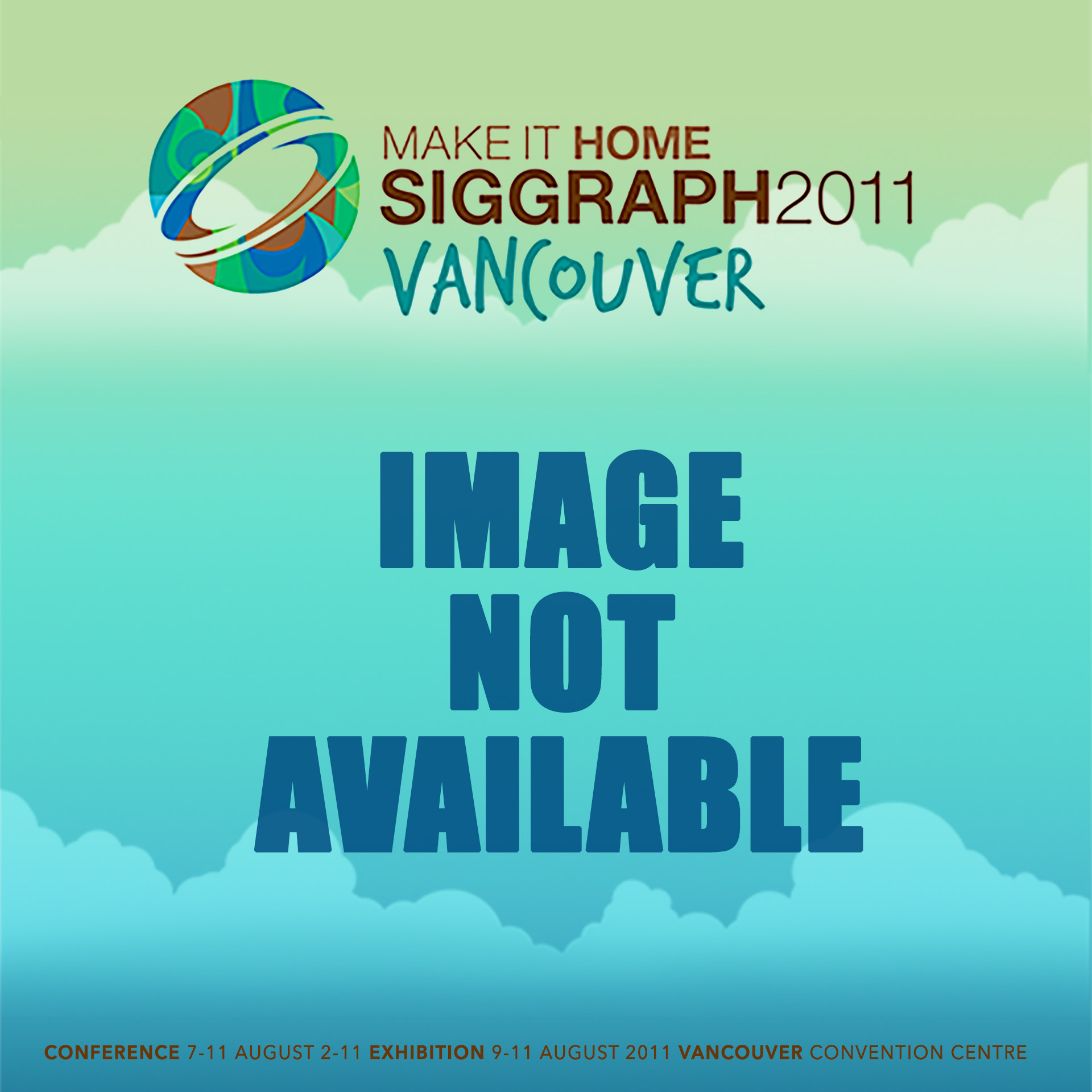“High-quality spatio-temporal rendering using semi-analytical visibility” by Gribel, Barringer and Akenine-Moller
Conference:
Type(s):
Title:
- High-quality spatio-temporal rendering using semi-analytical visibility
Presenter(s)/Author(s):
Abstract:
We present a novel visibility algorithm for rendering motion blur with per-pixel anti-aliasing. Our algorithm uses a number of line samples over a rectangular group of pixels, and together with the time dimension, a two-dimensional spatio-temporal visibility problem needs to be solved per line sample. In a coarse culling step, our algorithm first uses a bounding volume hierarchy to rapidly remove geometry that does not overlap with the current line sample. For the remaining triangles, we approximate each triangle’s depth function, along the line and along the time dimension, with a number of patch triangles. We resolve for the final color using an analytical visibility algorithm with depth sorting, simple occlusion culling, and clipping. Shading is decoupled from visibility, and we use a shading cache for efficient reuse of shaded values. In our results, we show practically noise-free renderings of motion blur with high-quality spatial anti-aliasing and with competitive rendering times. We also demonstrate that our algorithm, with some adjustments, can be used to accurately compute motion blurred ambient occlusion.
References:
1. Akenine-Möller, T., Munkberg, J., and Hasselgren, J. 2007. Stochastic Rasterization using Time-Continuous Triangles. In Graphics Hardware, 7–16. Google Scholar
2. Blinn, J. 1992. Hyperbolic Interpolation. IEEE Computer Graphics and Applications, 12, 4 (July), 89–94. Google ScholarDigital Library
3. Burns, C. A., Fatahalian, K., and Mark, W. R. 2010. A Lazy Object-Space Shading Architecture With Decoupled Sampling. In High Performance Graphics, 19–28. Google Scholar
4. Catmull, E. 1974. A Subdivision Algorithm for Computer Display of Curved Surfaces. PhD thesis, University of Utah. Google Scholar
5. Catmull, E. 1978. A Hidden-Surface Algorithm with Anti-Aliasing. In Computer Graphics (Proceedings of SIGGRAPH 78), 6–11. Google Scholar
6. Catmull, E. 1984. An Analytic Visible Surface Algorithm for Independent Pixel Processing. In Computer Graphics (Proceedings of SIGGRAPH 84), 109–115. Google Scholar
7. Cook, R. L., Porter, T., and Carpenter, L. 1984. Distributed Ray Tracing. In Computer Graphics (Proceedings of SIGGRAPH 84), 137–145. Google Scholar
8. Cook, R. L., Carpenter, L., and Catmull, E. 1987. The Reyes Image Rendering Architecture. In Computer Graphics (Proceedings of SIGGRAPH 87), 96–102. Google Scholar
9. Dally, W. 2009. Power Efficient Supercomputing. Accelerator-based Computing and Manycore Workshop (presentation).Google Scholar
10. Fatahalian, K., Luong, E., Boulos, S., Akeley, K., Mark, W. R., and Hanrahan, P. 2009. Data-Parallel Rasterization of Micropolygons with Defocus and Motion Blur. In High Performance Graphics, 59–68. Google Scholar
11. Fuchs, H., Kedem, Z., and Naylor, B. 1980. On Visible Surface Generation by a Priori Tree Structures. In Computer Graphics (Proceedings of SIGGRAPH 80), vol. 14, 124–133. Google Scholar
12. Grabli, S., Durand, F., and Sillion, F. 2004. Density Measure for Line-Drawing Simplification. In Pacific Graphics, 309–318. Google Scholar
13. Grant, C. W. 1985. Integrated Analytic Spatial and Temporal Anti-Aliasing for Polyhedra in 4-Space. In Computer Graphics (Proceedings of SIGGRAPH 85), 79–84. Google Scholar
14. Greene, N., Kass, M., and Miller, G. 1993. Hierarchical Z-Buffer Visibility. In Proceedings of SIGGRAPH, 231–238. Google Scholar
15. Gribel, C. J., Doggett, M., and Akenine-Möller, T. 2010. Analytical Motion Blur Rasterization with Compression. In High-Performance Graphics, 163–172. Google Scholar
16. Hachisuka, T., Jarosz, W., Weistroffer, R., K. Dale, G. H., Zwicker, M., and Jensen, H. 2008. Multidimensional Adaptive Sampling and Reconstruction for Ray Tracing. ACM Transactions on Graphics, 27, 3, 33.1–33.10. Google ScholarDigital Library
17. Haeberli, P., and Akeley, K. 1990. The Accumulation Buffer: Hardware Support for High-Quality Rendering. In Computer Graphics (Proceedings of SIGGRAPH 90), 309–318. Google Scholar
18. Hennessey, J. L., and Pattersson, D. A. 2006. Computer Architecture: A Quantitative Approach, 4th ed. MKP Inc. Google ScholarDigital Library
19. Jones, T. R., and Perry, R. N. 2000. Antialiasing with Line Samples. In Eurographics Workshop on Rendering, 197–205. Google ScholarDigital Library
20. Korein, J., and Badler, N. 1983. Temporal Anti-Aliasing in Computer Generated Animation. In Computer Graphics (Proceedings of SIGGRAPH 83), 377–388. Google Scholar
21. Laine, S., and Karras, T. 2010. Two Methods for Fast Ray-Cast Ambient Occlusion. Computer Graphics Forum (Eurographics Symposium on Rendering), 29, 4, 1325–1333. Google Scholar
22. Manson, J., and Schaefer, S. 2011. Wavelet Rasterization. Computer Graphics Forum, 30, 2, 395–404.Google ScholarCross Ref
23. McGuire, M., Enderton, E., Shirley, P., and Luebke, D. 2010. Hardware-Accelerated Stochastic Rasterization on Conventional GPU Architectures. In High Performance Graphics, 173–182. Google ScholarDigital Library
24. Naiman, A. C. 1998. Jagged Edges: when is Filtering Needed? ACM Transactions on Graphics, 17, 4, 238–258. Google ScholarDigital Library
25. Owens, J. D. 2005. Streaming Architectures and Technology Trends. In GPU Gems 2. Addison-Wesley, 457–470.Google Scholar
26. Pantaleoni, J., Fascione, L., Hall, M., and Aila, T. 2010. PantaRay: Fast Ray-traced Occlusion Caching of Massive Scenes. ACM Transaction on Graphics, 29, 3, 37.1–37.10. Google ScholarDigital Library
27. Ragan-Kelley, J., Lehtinen, J., Chen, J., Doggett, M., and Durand, F. 2011. Decoupled Sampling for Graphics Pipelines. to appear in ACM Transactions on Graphics, 30, 3. Google Scholar
28. Sung, K., Pearce, A., and Wang, C. 2002. Spatial-Temporal Antialiasing. IEEE Transactions on Visualization and Computer Graphics, 8, 2, 144–153. Google ScholarDigital Library
29. Sutherland, I. E., Sproull, R. F., and Schumacker, R. A. 1974. A Characterization of Ten Hidden-Surface Algorithms. ACM Computing Surveys, 6, 1, 1–55. Google ScholarDigital Library
30. Weiler, K., and Atherton, P. 1977. Hidden Surface Removal using Polygon Area Sorting. In Computer Graphics (Proceedings of SIGGRAPH 77), 214–222. Google Scholar
31. Wexler, D., Gritz, L., Enderton, E., and Rice, J. 2005. GPU-Accelerated High-Quality Hidden Surface Removal. In Graphics Hardware, 7–14. Google Scholar
32. Whitted, T. 1980. An Improved Illumination Model for Shaded Display. Communications of the ACM, 23, 6, 343–349. Google ScholarDigital Library
33. Zhukov, S., Iones, A., and Kronin, G. 1998. An Ambient Light Illumination Model. In Eurographics Workshop on Rendering, 45–55.Google Scholar




